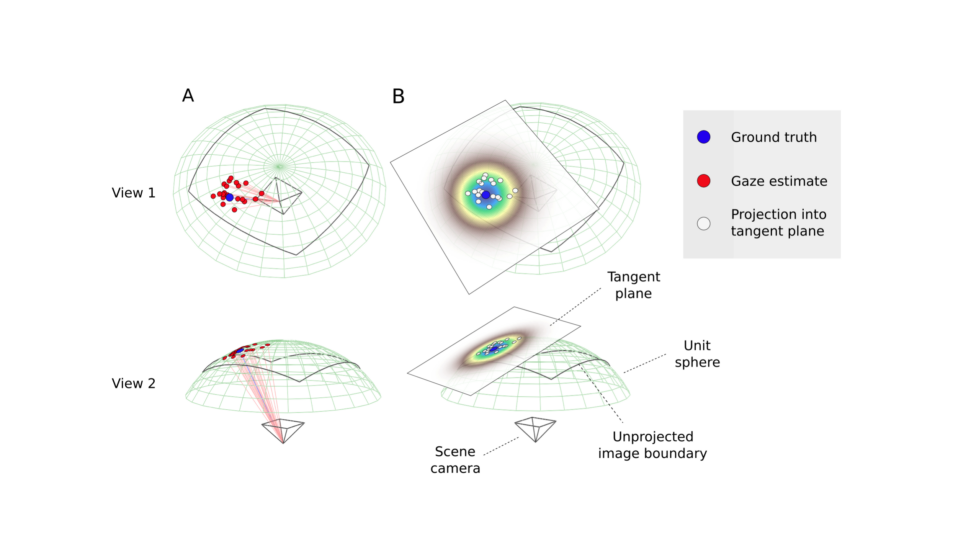Seeing through – An evaluation of Pupil Invisible glasses
Since a couple of months, Pupil Labs is selling its new Pupil Invisible glasses. Being a lead R&D engineer at Pupil Labs, I am super excited about seeing our novel head-mounted eye tracker in the hands of a growing number of users, both in academia and industry. Employing an AI-powered approach to gaze estimation, Pupil Invisble glasses offer calibration-free eye tracking, performing reliably also in scenarios which hitherto were prohibitely challenging for traditional head-mounted eye trackers. Not only do Pupil Invisible glasses produce accurate gaze estimates in highly dynamic scenarioes – think e.g. playing soccer or mountain-biking – they can also handle the most difficult lighting conditions, as e.g. occuring outside on a sunny day. And on top of that, they actually do look like a pair of stylish glasses!
In order to give our users insights into the high-level workings of Pupil Invisible glasses and to also provide a thorough evaluation of its gaze-estimation capabilities, together with Marc Tonsen and Chris Kay Baumann, I have recently published a white paper about Pupil Invisible on arXiv. Our analysis is based on a large in-house dataset, which was recorded with the aim of faithfully capturing the performance of Pupil Invisible glasses in typical in-the-field situations. If you are interested in learning more about the technology behind Pupil Invisible glasses and about its gaze-estimation performance, you can check out our paper here:
M. Tonsen, C. K. Baumann, K. Dierkes. A High-Level Description and Performance Evaluation of Pupil Invisible. In: arXiv, 2009.00508, 2020.

Leave a Reply